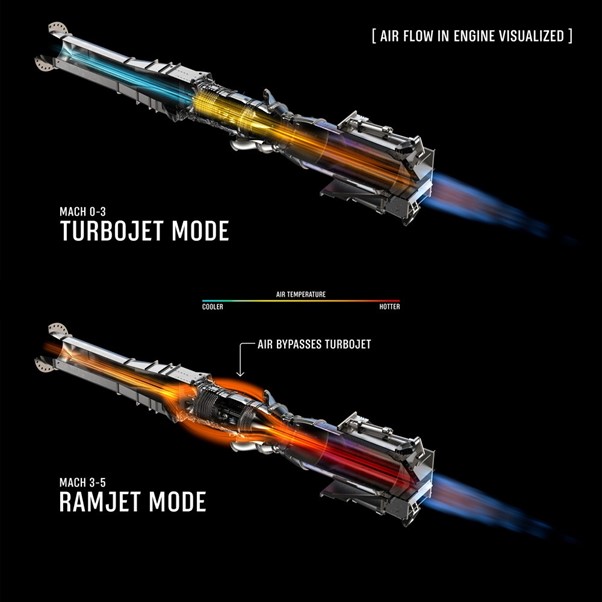
One Step Closer to Hypersonic Flight
Hermeus has demonstrated turbojet to ramjet transition within its CHIMERA engine – one of the most important technological steps on the path to making operational hypersonic flight a reality.
CHIMERA is a turbine-based combined cycle engine (TBCC) – a hybrid turbojet/ramjet – which will potentially allow the company’s Quarterhorse aircraft to take off from a regular runway and then accelerate up to high-Mach speeds. Notably, Hermeus designed, built, and tested CHIMERA in just 21 months for $18 million.
“This achievement is a major technical milestone for Hermeus,” said CEO A J Piplica. “But more than that, it’s a proof point that demonstrates how our small team can rapidly design, build, and test hardware with budgets significantly smaller than industry peers.” CTO Glenn Case added, “Completing this testing on the ground significantly de-risks our Quarterhorse flight test campaign, which will begin late next year.”
At low speeds, CHIMERA is in turbojet mode – just like any jet aircraft. But as the temperature and speed of the incoming air increase, turbojets hit their performance limit – at around Mach 2. CHIMERA has a pre-cooler that reduces the temperature of incoming air, allowing Hermeus to squeeze out a bit more performance from the turbojet before transitioning to ramjet. At around Mach 3, CHIMERA begins to bypass the incoming air around the turbojet and the ramjet takes over completely: ramjets are optimal between Mach 3-5.
Hermeus’ TBCC engine is unique in the field of hypersonics – a full-range air-breathing hypersonic engine does not require a rocket to accelerate, and Hermeus is thereby setting the stage for operational hypersonic flight – meaning aircraft that can be rapidly re-used. An additional benefit is that Hermeus aircraft are designed to be operational at traditional airports.
Original at Monch Publishing Group.








.png)
.gif)